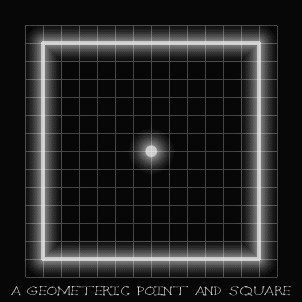Math Brain Teaser: The Unkindest Cut of All, Part 1 of 2
In honor of Mathematics Awareness Month, here is another mathematical brain bender from puzzle master Wes Carroll.
The Unkindest Cut of All, Part 1 of 2
Difficulty: HARD
Type: MATH (Spatial)

Question:
The area of a square is equal to the square of the length of one side. So, for example, a square with side length 3 has area (32), or 9. What is the area of a square whose diagonal is length 5?
In this puzzle you are working out your spatial visualization (occipital lobes), memory (temporal lobes), and hypothesis generation (frontal lobes).
Solution:
12.5
Explanation:
I am especially fond of these two ways to solve this problem:
1. Draw the right triangle whose hypotenuse is the square’s diagonal, and whose two legs are two sides of the square. Then use the Pythagorean Theorem (a^2 + b^2 = c^2) to solve for the length of each side. Since two sides are equal, we get (a^2 + a^2 = c^2), or (2(a^2) = c^2) ). Since c is 5, 2(a^2) = 25, making a^2 equal to 25/2, or 12.5. Since the area of the square is a^2, we’re done: it’s 12.5.
2. Tilt the square 45 degrees and draw a square around it such the the corners of the original square just touch the middles of the sides of the new, larger square. The new square has sides each 5 units long (the diagonal of the smaller square), and it therefore has area 25. However, a closer inspection reveals that the area of the larger square must be exactly twice that of the smaller. Therefore the smaller square has area 25/2, or 12.5.
You can now go on to Concentric Shapes: The Unkindest Cut of All, Part 2 of 2
More brain teaser games:



I feel the solution is too long, easiest thing to do is:
you know that the diagonal is sq.rt(2)*x where x is the measurement of the side. since that’s true, then swuare the answer nd you’re done. so [5/2qrt(2)]^2 = 12.5
There is another easy way:
The diagonal divides the square in two triangles. Each triangle has an area of bxh/2
b = diagonal
h = diagonal / 2
so 5 x 2.5 / 2 = 6.25
6.25 x 2 triangles = 12.5
I think you would have to set the difficulty to Easy.
Bye.
I concur!
12.5
a^2 + b^2 = c^2
You square the length of the diagonal ©.
25 = a^2 + b^2
because its a square both sides are equal. So divide by 2 to get the square of 1 of the sides ie the volume.
Notice two diagonal lines, one for each pair of opposing corners of the square, form four halves of 2 squares. The length of the side of any of these halves is equal to half of 5, or 2.5. The area of a square is one of its sides squared, 2.5^2 = 6.25 * 2 = 12.5, as (again) there are four halves of two squares.
A^2+b^2=c^2. C = 5, and a =b. 5x5=25=c^2. A^2+b^2=25. a^2 and b^2 therefore both equal 12.5. A^2 is the formula for area, so the area is 12.5
12.53 where the square root of 2 = 1.41421356
I concur, this puzzle’s difficulty setting should be changed to “Easy”. I arrived at the result in about 15 seconds, and that’s certainly not bragging…
I believe the purpose for these puzzles is to exercise the portions of the brain that are in use when completing the activity.
You guys are making this too hard.
Two isosceles triangles with hypotenuse 25.
Each other side is the square root of 12.5.
square root of 12.5 squared is 12.5